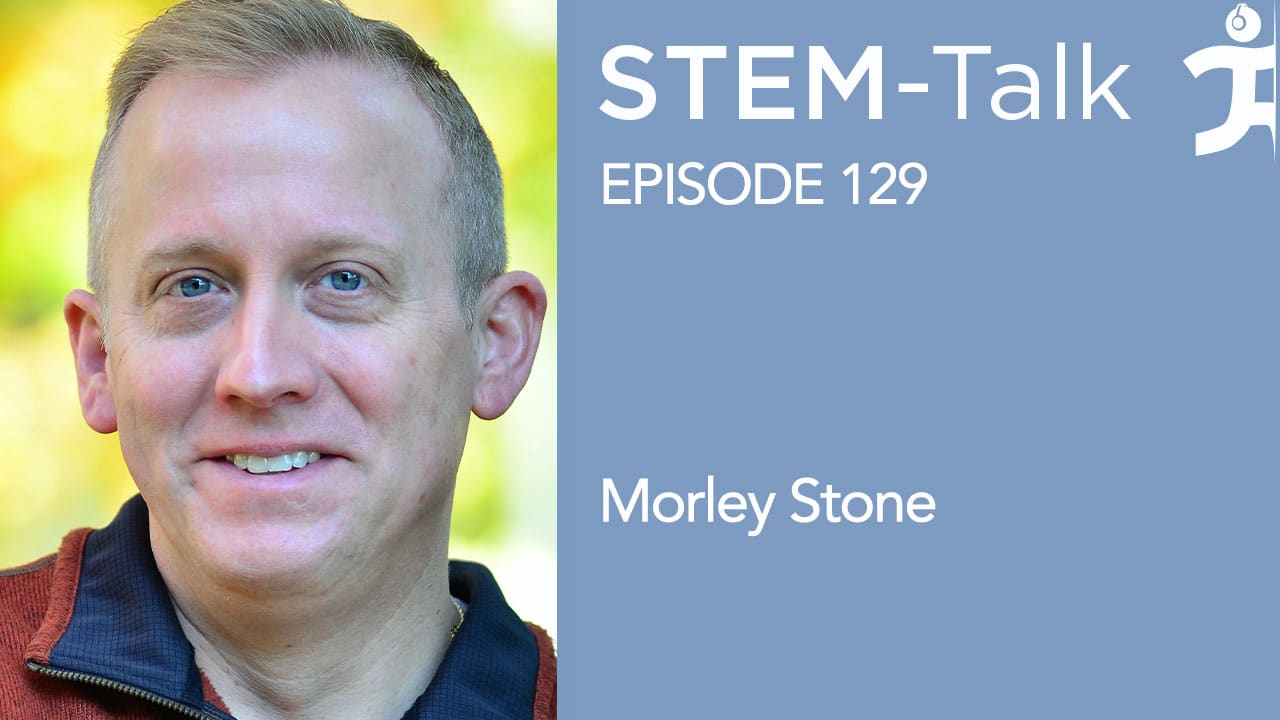STEM-Talk
Episode 129: Morley Stone talks about biomimetics and human performance augmentation
// Oct 14, 2021

Our guest today is Dr. Morley Stone, the former Chief Technology Officer for the Air Force Research Laboratory (AFRL) and former Senior Vice President for Research at Ohio State University, who is now IHMC’s Chief Strategic Partnership Officer. Morley is recognized as an international leader in biomimetics and human performance.
In today’s interview, we talk to Morley about his time as AFRL’s chief technology officer as well as his stint as the chief scientist for the Air Force’s 711th Human Performance Wing, which is responsible for providing technical oversight of projects geared to optimize human performance for the nation’s air, space, and cyberspace forces. We also have a fascinating conversation with Morley about his early career and research into biomimetics, which is the study of using biological structures, materials and principles as models for the development of new materials, structures, and devices.
In his new role at IHMC, Morley will become the institute’s point person for public- and private-sector partnerships. He also will work with IHMC’s scientists and research staff to help coordinate and implement the multitude of scientific projects the institute has in its pipeline.
Show notes:
[00:03:07] Dawn mentions that Morley grew up in a small steel producing town in Pennsylvania and asks him what he was like as a kid. [00:03:56] Ken asks Morley about his days as wrestler growing up and why he still today views wrestling as a special sport. [00:05:00] Dawn asks about Morley’s move to Dayton, Ohio, when he was 17. [00:05:36] Dawn asks how Morley decided upon Wright State as opposed to the University of Dayton. [00:05:57] Morley tells the story of how a girl in college pointed out an ad for an internship and how that helped him decide to become a biochemistry major. [00:06:43] Dawn asks what happened to the girl who pointed out the aforementioned ad. [00:08:28] Ken asks Morley to talk about the Air Force Research Lab (AFRL) and the role of the lab’s Materials and Manufacturing Directorate. [00:09:53] Dawn mentions that after earning his bachelor’s degree, Morley had a short stint as a materials research engineer at the directorate before heading off to Carnegie Mellon University to work on a Ph.D. in biochemistry. Dawn asks why Morley chose to attend Carnegie Mellon. [00:11:08] Dawn mentions that in the late ‘80s and early ‘90s, Morley had the good fortune to work with scientists who had the foresight to know that there was going to be a radical change in material science, which up until that point had been dominated by metals and ceramics. Morley talks about the most important lessons he learned from these colleagues and mentors. [00:12:41] Dawn asks about Morley’s time as a research biologist, and eventually principal research biologist, at the Materials and Manufacturing Directorate after his Ph.D. [00:14:41] Ken asks Morley to explain biomimetics and discuss the systems that Morley and his colleagues looked at during his time at the Materials and Manufacturing Directorate, ranging from infrared sensing to instances of biological camouflage. [00:18:01] Dawn mentions that the creation of nanoscale materials for advanced structures has led to a growing interest in the area of biomineralization, she goes on to say that during Morley’s time at the directorate, he especially researched the process of biomineralization and the assembly of nanostructured inorganic components into hierarchical structures, which led to the development of a variety of approaches that mimic the recognition and nucleation capabilities found in biomolecules for inorganic material synthesis. Morley discusses his 2002 paper in Nature Materials where he described the in vitro biosynthesis of silver nanoparticles using silver-binding peptides. [00:21:20] Dawn asks about Morley’s 2004 paper in Advanced Materials where he and his colleagues had taken a protein that was responsible for thermal sensing and incorporated it into an array. [00:23:21] Ken asks about the follow-up paper to Morley’s aforementioned 2004 paper, published in 2005 in the Journal of the American Chemical Society. It was titled “Polypeptide-Templated Synthesis of Hexagonal Silica Platelets.” [00:25:28] Dawn asks Morley about his time as program manager in DARPA’s Defense Science Office from 2003 to 2006. [00:27:30] Morley explains what the Heilmeier Catechism is. [00:28:51] Dawn asks about Morley’s time as senior scientist for Molecular Systems Biotechnology in the Human Effectiveness Directorate of the Air Force Research Laboratory. [00:31:25] Ken mentions that in a 2011 report that ran in The Armed Forces Journal, Morley laid a foundation for how the Department of Defense could play a leadership role in human performance augmentation as a way of developing the “quantified warrior” as he described it. Ken goes on to mention that he cited this paper in a 2014 article he co-authored with Clark Glymour for the Bulletin of Atomic Scientists titled “The Enhanced Warfighter.” Ken asks Morley to talk about his paper and the changes that he has seen in the field since it was published. [00:35:31] Dawn asks what led Morley in 2018 to become the senior vice president for research at Ohio State University. [00:36:33] During a meeting recently held at IHMC, a young academic asked Morley why he left the lab and working directly in applied research to pursue more of a leadership role. Morley responded by saying, “I’m going to be very clear that there’s nothing as fun as when you’re a bench scientist.” Dawn asks Morley why he thinks this. [00:40:00] Ken asks Morley what it is about the various leadership roles that he has had over the years that he finds most rewarding. [00:42:36] Dawn asks why Morley recently joined IHMC and how he sees his new position as the institute’s Chief Strategic Partnership Officer. [00:44:26] Ken mentions that during Morley’s time at DARPA he focused on biologically inspired robotics. Now that Morley is working at IHMC, Ken asks how it feels to be working with a robotics lab that also draws its inspiration from biology. [00:45:40] Ken asks Morley what he likes to do with his spare time now that he and his wife have settled into Pensacola.Links:






